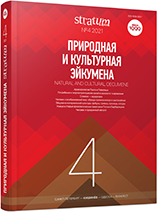Жертвоприношения коней в «княжеских» могилах поздней фазы Великого переселения народов на римско-германском Западе: восточные параллели
Sacrifices of Horses in “Princely” Tombs During the Late Phase of the Great Migration Period
Author(s): Michel KazanskiSubject(s): History, Archaeology, Ancient World, 6th to 12th Centuries
Published by: Издательский дом Stratum, Университет «Высшая антропологическая школа»
Keywords: Western Europe; Central Europe; Eastern Europe; Great Migration Period; “princely” burials; burial of horses; Germans; Huns;
Summary/Abstract: The article considers a few graves of the elite of the Great Migration Period, containing several burials of horses. In the German context, this is a “royal” burial in Tournai on the territory of modern Belgium, owned by King Childeric (died 481/482) and burials in a barrow in Žuráň, in South Moravia, probably belonging to the Lombard royal family. Their parallels in Eastern Europe are finds in the necropolis of Sirenevaya Buhta in the Eastern Crimea and Malai in the region of Eastern Azov Sea. Horse burials in Western and Central Europe can be associated with the influence of the Huns on aristocratic civilization, and reflect the high social status of the buried.
Journal: Stratum plus. Археология и культурная антропология
- Issue Year: 2021
- Issue No: 4
- Page Range: 95-108
- Page Count: 14
- Language: Russian
- Content File-PDF

